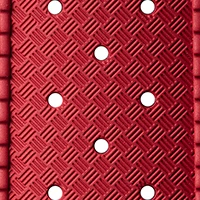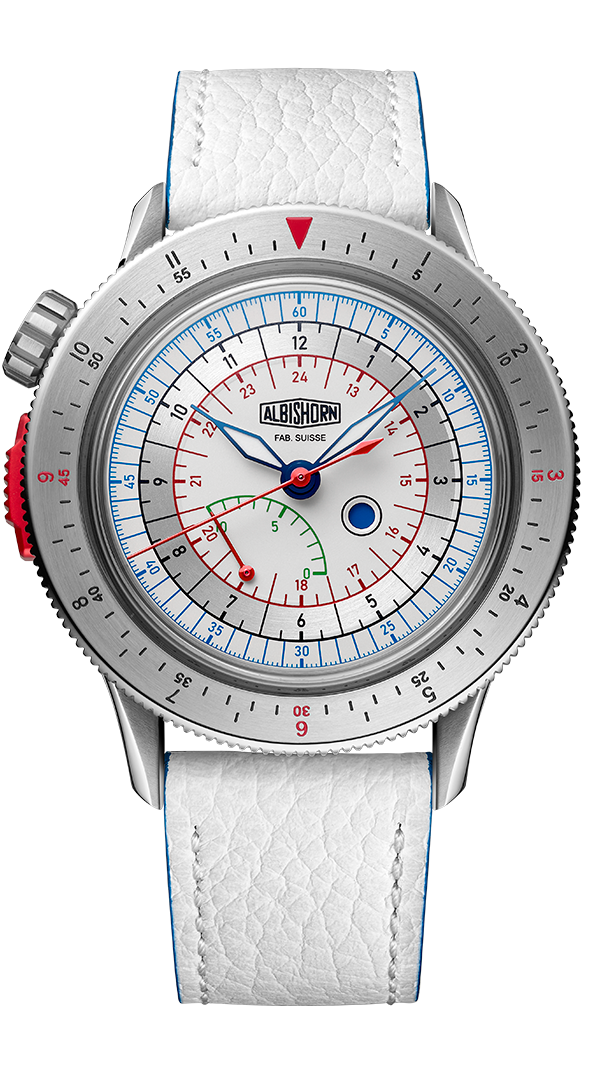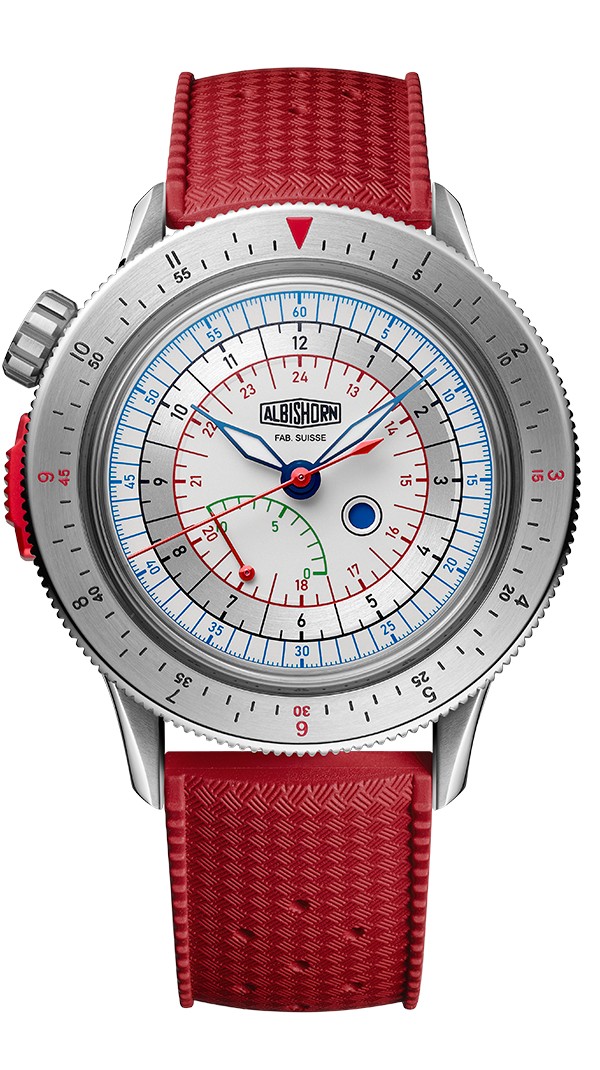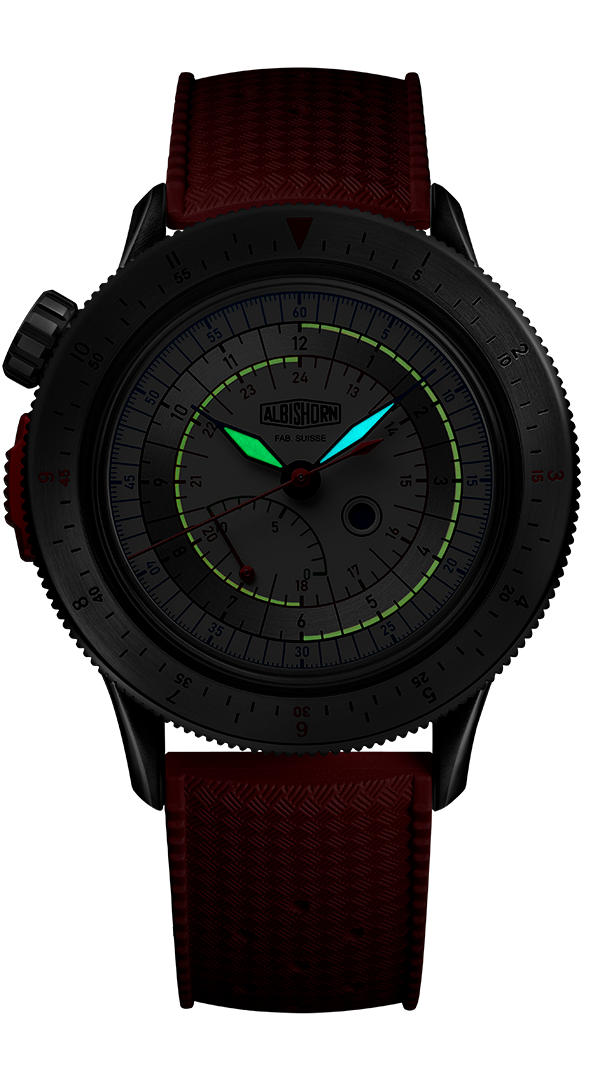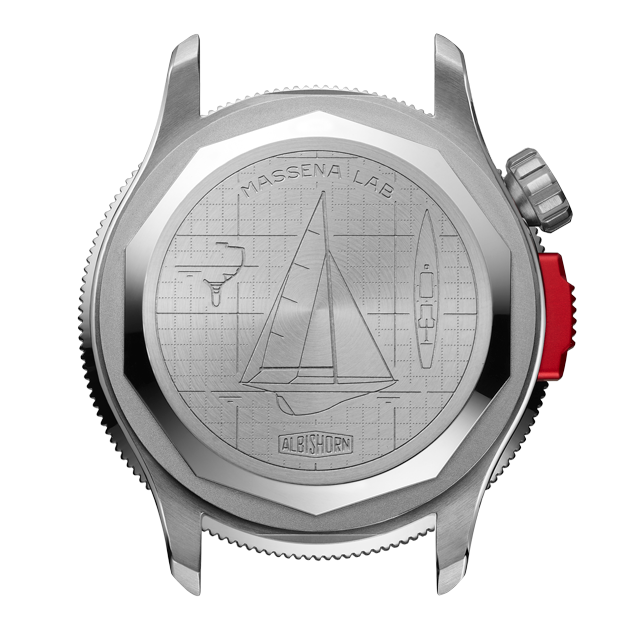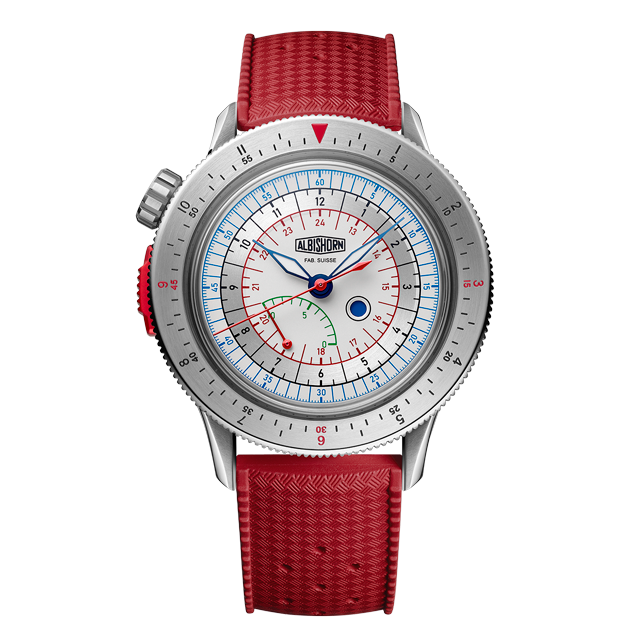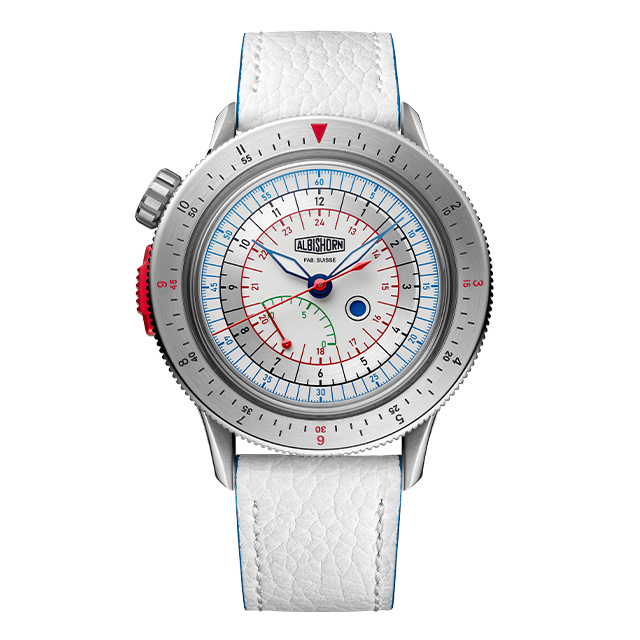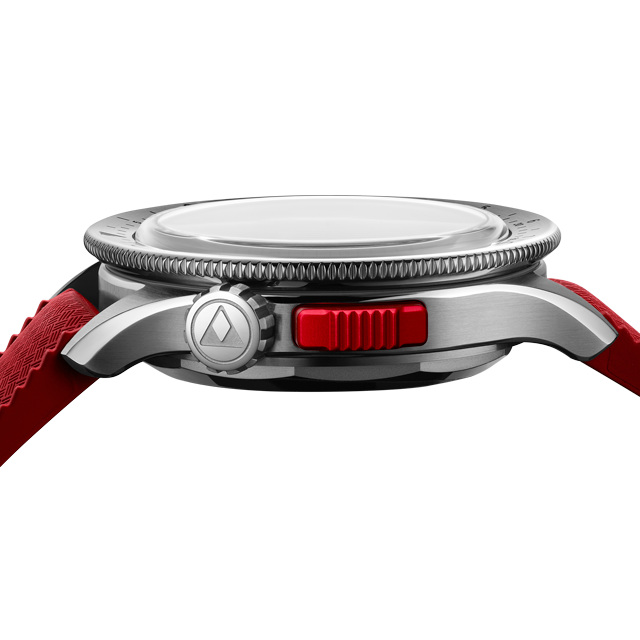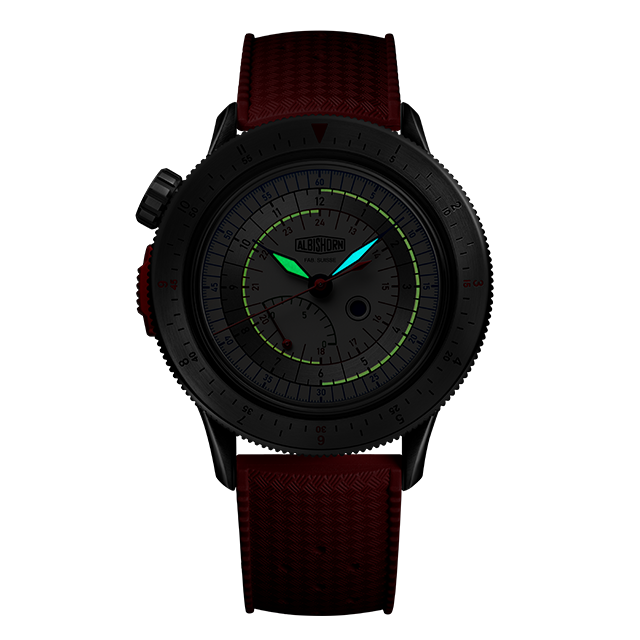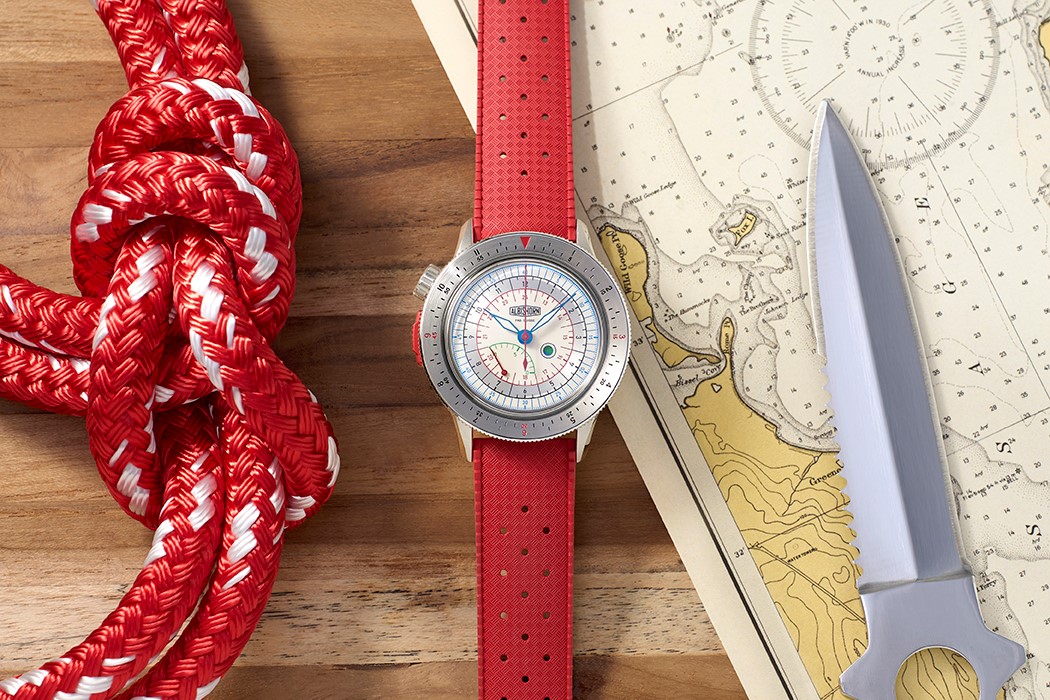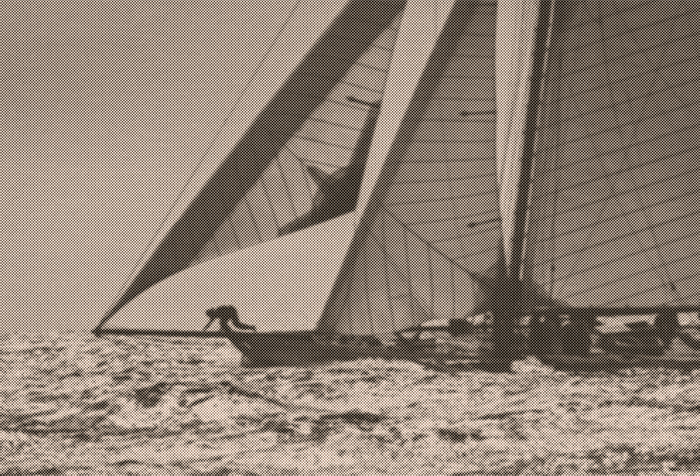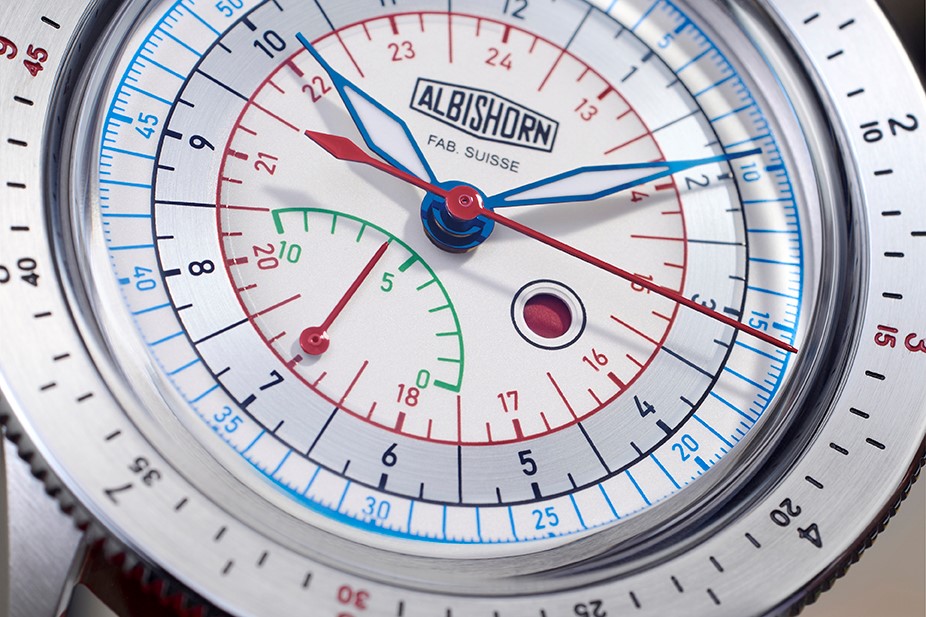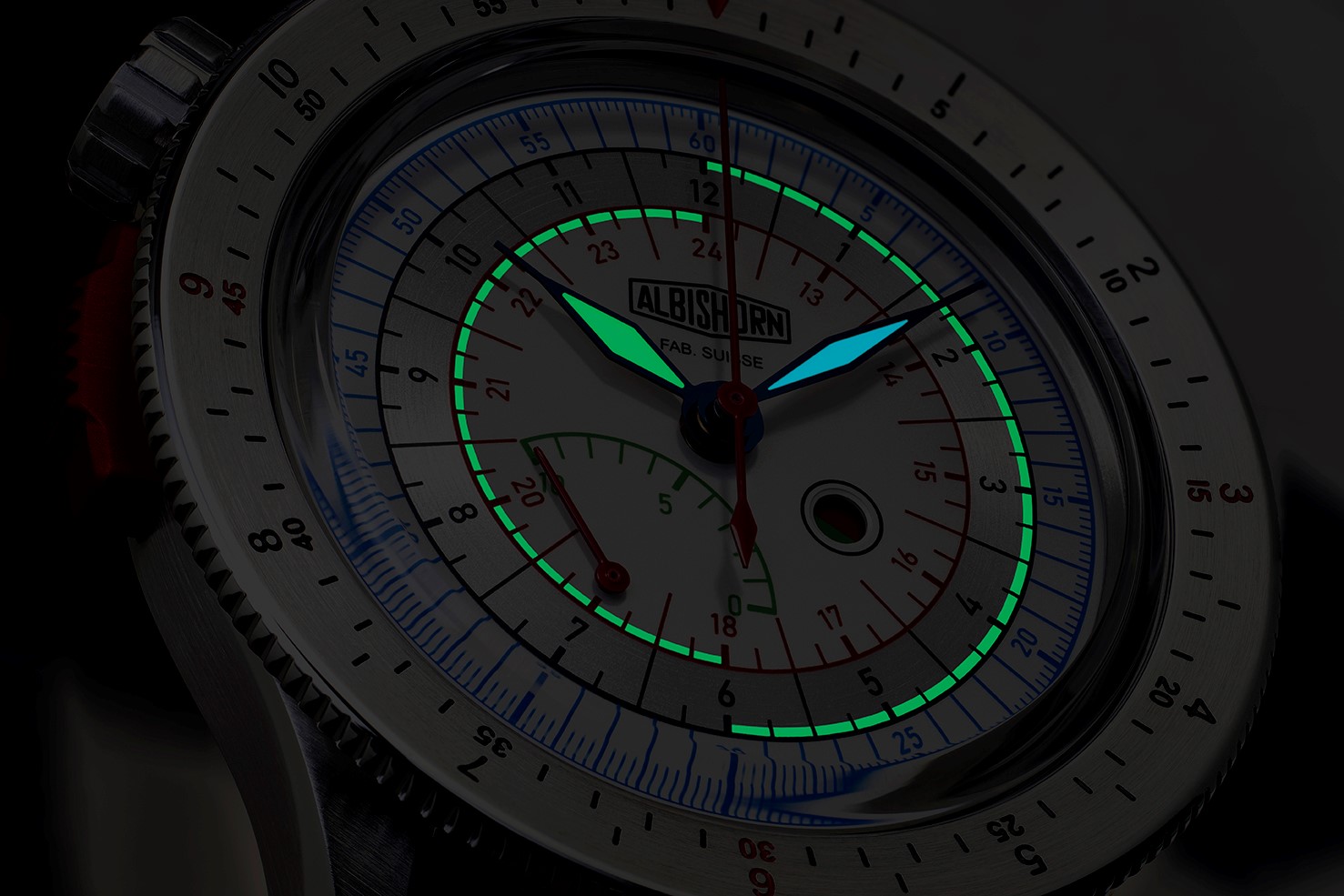1939
MAXIGRAPH
Albishorn x Massena LABThe Maxigraph is a single pusher nautical chronograph, featuring a unique and innovative design and a patented mechanical movement. It is an imaginary vintage chronograph hypothetically commissioned for the first edition of the esteemed regatta race on Lake Geneva, Le Bol d’Or, in 1939
Imaginary history
Regatta chronographs are among the most interesting and joyful chronographs ever produced, thanks to their original designs and often colorful dials. Their appeal goes far beyond skippers and sailing enthusiasts. These timepieces have captured the interest of watch collectors and aficionados due to their unique functionality and aesthetic appeal.
Regatta chronographs have an incredibly rich history that predates their adaptation to wristwatches. Originating as pocket or stopwatches, they emerged alongside the first regatta competitions.
The transition from pocket watches to wristwatches brought greater convenience and accessibility to sailors. This evolution mirrored broader trends in watchmaking, where the wristwatch became increasingly popular across various fields due to its practicality and portability.
Over time, watchmakers continued to innovate, incorporating specialized features such as brightly colored countdown markers, rotating bezels, and pushers designed for ease of use even in the challenging conditions at sea. These enhancements made the watches not only practical for regattas but also visually striking.
Interestingly, all the technical ingredients for modern-day waterproof chronographs were available by the end of the 1930s but were never applied to regatta chronographs at the time. The specific requirements of regatta timing functions, combined with the niche market for such specialized timepieces, likely contributed to the delay in integrating these waterproofing technologies into regatta chronographs.
Albishorn decided to fill this gap in the history of regatta chronographs by creating such a technically advanced, prototype-like, automatic regatta chronograph from the end of the 1930s.
Crafted with precision, purpose and a touch of madness too, the Maxigraph may have been commissioned by the owner of a cutting-edge racing sailboat, such as the Ylliam IV, for the first edition of the legendary regatta race on Lake Geneva, Le Bol d'Or, in 1939.

Technical
specifications
Case diameter: 39 mm
Bezel diameter: 41,7 mm
Lug to lug: 47,7 mm
Lug width: 20 mm
Case thickness: 13 mm (with sapphire);
12.1 mm (without sapphire)
Waterproof to 100 meters
Self-winding
Monopusher
Height: 6,60 mm
Diameter: 30,00 mm
Hours and minutes
60 seconds counter in the center
Patented retrograde 10-minute regatta function
Running indicator by disc
Stop second device
28’800 vibrations per hour (4 Hz)
25 jewels
Typical power reserve: 64 hours
The watch
The silver dial of the Maxigraph was designed with a focus on legibility and functionality. Each scale has its own place, finish, and color, resulting in an original and modernist sector dial. This very specific dial layout is unique and pays tribute to precision instruments from that era.
Night readability is ensured by luminous material subtly integrated within two different scales. The first arc of luminous material runs from 18 to 24 o’clock, while the second, larger arc, runs from 12 to 6 o’clock. The hands are filled with luminous material too, allowing for easy reading in low-light conditions.
To ensure excellent legibility and unlike any other mechanical chronograph wristwatch, the Maxigraph boasts a patented 10-minute retrograde regatta countdown at 7 o’clock and an aperture at 4 o’clock showcasing colored disc acting as a running indicator.
Case
While being automatic, the Maxigraph remains sleek with only a 13 mm height (sapphire box crystal included!). Made of steel, the case of the Maxigraph reflects a seamless blend of robustness and elegance. The alternance of brushed and polished surfaces provides a subtle contrast, accentuating the watch’s overall presence. All edges of the case have been chamfered and polished, offering a sophisticated haute horlogerie aesthetic.
The back is adorned with a technical drawing inspired by Ylliam IV, the 6 Meters rule boat which won the Bol d’Or in 1939.
One of the standout features of the Maxigraph is its steel turning bezel. It was designed to rotate in a bidirectional manner and features two different engraved scales (12 and 60 units) which are then filled with either red or black lacquer.
Positioned at 10 o’clock, the crown allows for easy winding and time-setting while keeping it clear of any obstructions during crucial maneuvers. Adjacent to the crown, at 9 o’clock on the case side, is a red aluminum pusher, discreetly integrated into the case design. This location allows the pusher to be operated by the thumb, the finger considered the best one for operating a chronograph. The large size of the pusher simplifies the operation and adds a touch of uniqueness to the watch.
Movement
The movement was designed as a monopusher chronograph, therefore featuring a single button to control all the chronograph functions (start, stop, and reset) rather than the more common two-pusher system.
A further standout attribute of your Maxigraph’s movement is its remarkably low height for an automatic chronograph of only 6.60 mm.
Albishorn specifically developed this movement to showcase the brand's distinctive and unique dial layout, featuring a patented 10-minute retrograde regatta countdown at 7 o’clock and an aperture for a running indicator at 4 o’clock.
Unlike typical regatta chronograph countdown indications, which restart endlessly the countdown once it is over, the one from the Maxigraph was designed to stop once the 10 minutes are over, while the seconds of the chronograph continue running. To reset the countdown indication, the chronograph has to be stopped and reset using the pusher at 9 o’clock.

